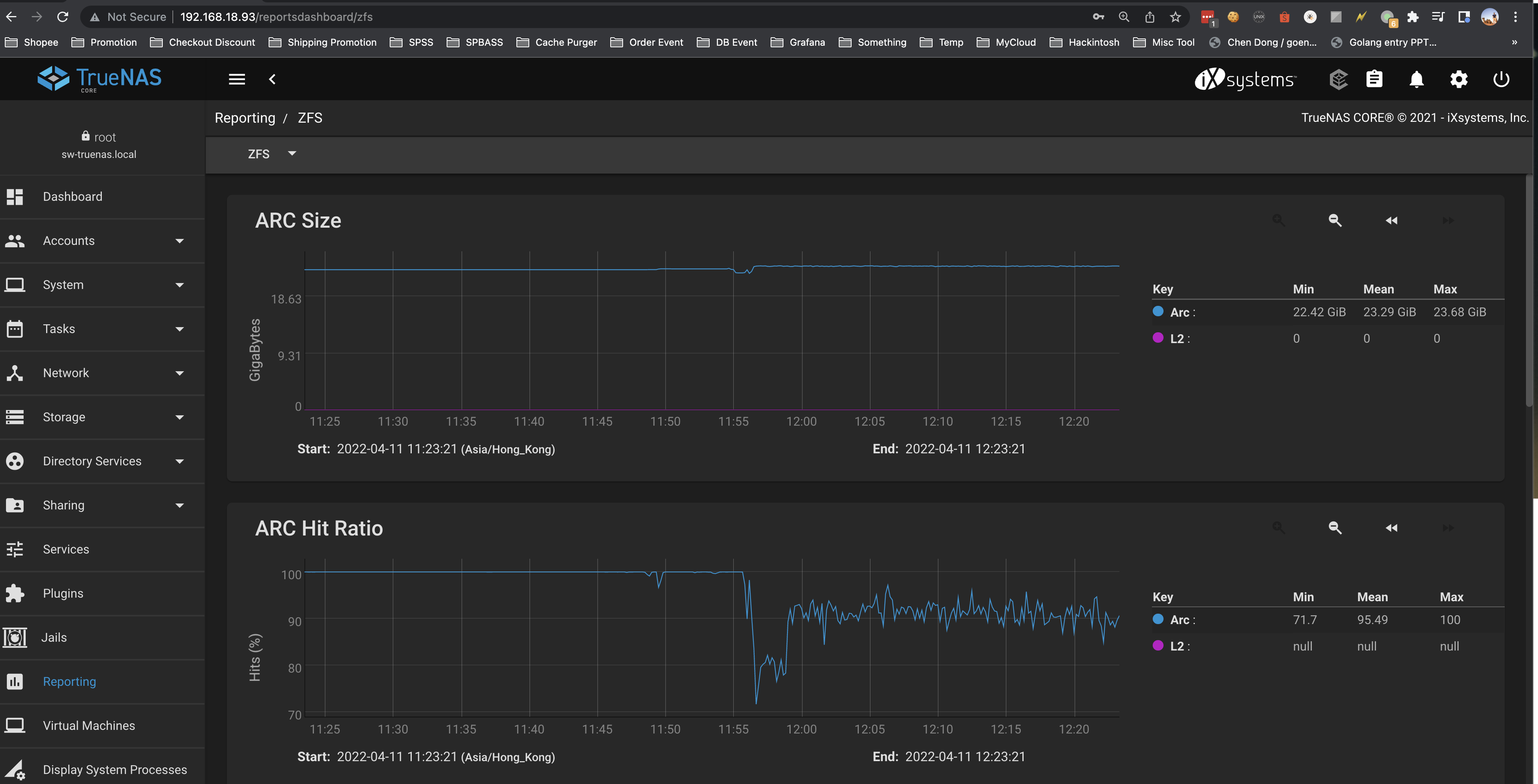Knowledge
Cache
The technologies work in conjunction with a flash-based separate write log (SLOG), which can be thought of as a write cache that keeps what’s called the ZFS-intent log (ZIL), used to accelerate writes. On the read side, flash can be used as a level two adaptive replacement (read) cache (L2ARC) to keep the hottest data sets on the faster flash media. Workloads with synchronous writes such as NFS and databases consistently benefit from SLOG devices, while workloads with frequently-accessed data may benefit from an L2ARC device. The reason that an L2ARC device is not always the best choice is because the level one ARC in RAM will always provide a faster cache; also, some RAM will be used by the L2ARC table.
About L2CARC and ARC
- a level two ARC, or L2ARC, is typically an SSD or NVMe-based read cache, instead of write and read cache, which means adding L2CARC won’t boost the write speed.
- An SSD or NVMe card is often used for a ZFS separate log device, or SLOG, to boost the performance of synchronized writes, such as over NFS or with a database.
Stat

Reference
- https://www.truenas.com/community/threads/explanation-of-arc-hit-graphs.64461/
- https://www.truenas.com/community/threads/interpreting-the-arc-reporting-graphs-or-would-i-benefit-from-more-ram-under-these-conditions.59468/
FEATURED TAGS
algorithm
algorithmproblem
architecturalpattern
architecture
aws
c#
cachesystem
codis
concurrentcontrol
database
dataformat
datastructure
debug
design
designpattern
distributedsystem
django
docker
domain
engineering
freebsd
git
golang
grafana
hackintosh
hadoop
hardware
hexo
http
hugo
ios
iot
java
javaee
javascript
kafka
kubernetes
linux
linuxcommand
linuxio
lock
macos
markdown
microservices
mysql
nas
network
networkprogramming
nginx
node.js
npm
oop
openwrt
operatingsystem
padavan
performance
programming
prometheus
protobuf
python
redis
router
security
shell
software-testing
spring
sql
systemdesign
truenas
ubuntu
vmware
vpn
windows
wmware
wordpress
zookeeper